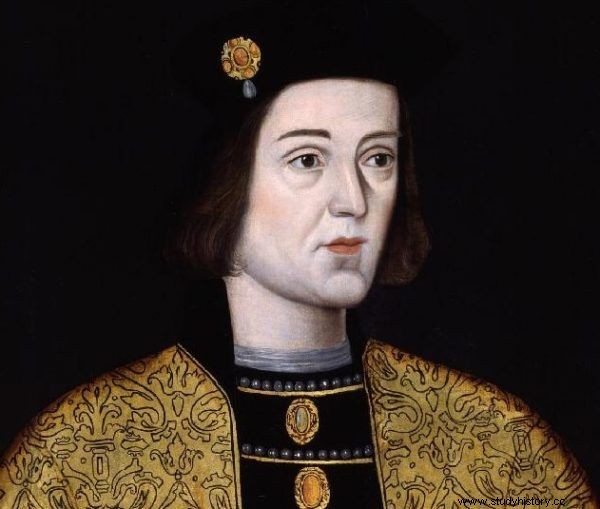Reigning has never been a safe activity. Some rulers have forgotten, however, that there are also down-to-earth dangers awaiting them. Which for example? And who of them died in the strangest way?
Most of the crowned heads in history were aware that their every step was watched carefully by masses of their subjects. Knowing that even sheer bad luck could be interpreted as a divine punishment for a less than exemplary life, kings and princes cared about their public image. Unfortunately, you can avoid everything - especially if you are overly fond of the pleasures of life. Which rulers met an end completely incongruous with the dignity of the scepter and the throne?
5. The king who burned down like a torch
The King of Navarre, Charles II, earned the nickname "The Bad" for a reason. His rule abounded in commissioned killings and broken alliances. He was also famous for suppressing peasant riots in France. No wonder his macabre end seemed to be his subdued example of divine justice at work.
How did the hated monarch die? He killed him in 1387 ... medical treatment. According to the report of the English author Francis Blangdon, the doctor recommended that the sick king should be wrapped in cloth soaked in brandy from the neck to the feet, and then sewn up. As a result of an accidental start of a fire, Charles was burned like a torch.
4. A careless knight
Unexpected death also befell Henry II of Valois, husband of Catherine de Medici. When on June 30, 1559, he organized a great tournament in honor of his sister's wedding and farewell to his daughter sent to the Spanish court, he did not expect such a disastrous end. Over forty years old and not as efficient as he was when he was young, the king without hesitation competed with the nearly thirty-year-old captain of his Scottish Guard, Gabriel Montgomery.

Henry II Valois died in the duel.
Henryk felt so self-confident that he did not even check the loosened bindings of the helmet in previous fights and did not close the helmet. When the captain hit the king in the breastplate, the lance shattered, and the shard lifted its helmet and stuck it in Henry's eye. The autopsy report stated that the splinters pierced the back wall of the eye socket "undoubtedly causing a very severe concussion." With such a serious infection, the medics of that time could do little. And so, at one in the afternoon on the eleventh day after the accident, Henryk died.
Today, researchers agree that Henry's wound could be healed as there was no damage to the skull or brain. It is also worth adding that the king could survive if ... he was superstitious. At the request of Catherine de Medici, Nostradamus himself gave him a horoscope and warned him to "avoid fighting in duels when he exceeds the 41st year of life, because during this period he may have a head wound that could blind him or even kill him" . Catherine herself, who dreamed of her husband's death, also unsuccessfully warned him.
3. Father's melons (and son's lemon)
Immoderate use of sensual pleasures has always been the domain of rulers. Some princes, kings, or popes took delight in the pleasures of the bed others preferred the pleasures of the table. The latter include, for example, Frederick III Habsburg. He was a lousy emperor, but a glutton. He loved fruit so much that one August morning in 1493 he gorged himself on melons and as a result ... left the throne to his 34-year-old son. Anyway, it is of great benefit to my country.
Admittedly, Maksymilian inherited from his father a taste for a richly set table, but he was able to moderate himself. He also despised drunkenness. The ruler, seasoned in battle, enjoying strength and perfect health, was said to be so strong that he broke the spar of the Landsknecht's replica in his hands.

What was life really like in medieval courts? You will find out in the book by Frances and Joseph Gies "Life in a Medieval Castle" (Znak Horizon 2017).
Finally, it was time for him, but he wasn't clinging to life at all costs. For several years he was even preparing to leave. He did not part with the coffin in which he wanted to be buried. In his will, he ordered to whip, pour lemon juice and sprinkle ash on his body, wrap it in a canvas bag, and then put it on public display. It was, in his opinion, evidence of the passing of earthly glory.
2. Royal Appetite
A glutton was also Edward IV, son of Richard Plantagenet and Cecylia Neville, known as the Rose of Raba Castle. Henry VII's court historian, Polydore Vergil, wrote of the king:"He was inclined to succumb to the lusts of the flesh," and in the last years of his life, "by indulging in excessive indulgence at the table [became] obese." Also in the chronicle from Croyland we read how by over indulging himself at the table Edward "gained tremendous weight in his loins" . What did Edward eat like this? I wrote about it with Barbara Faron in the book Seven Deaths. How died in the olden ages ":
For example, capon, ducks and partridges were served, as well as smaller birds such as snipe, larks and quails. The royal dish was waterfowl:swans, cranes and peacocks. Fish was treated rather as a fasting dish (...). Vegetables were less popular, but herbs were widely used, such as borage in poultry dishes. Quince compote was drunk, oranges, dates and almonds were also known, and the desserts resembled today's jellies or creams.
The feasts at the English court in particular were particularly lavish in Edward's time. There were even rumors at court that that the king was taking vomiting to be able to eat as much as he wanted . The feast of 1482 turned out to be his last. In the spring, he "fell back in bed neither tired of old age, nor sick with a known ailment."

Edward IV was famous for his immoderate eating.
French diplomat Philippe de Commines reports that Edward died of an attack of apoplexy as a result of overeating. Others have speculated about poisons or complications from the disease, but the simplest scenario is most likely. He defeated the ruler - at the age of forty! - long-term unhealthy lifestyle.
Exploding intestines and poisoning brain
According to the accounts, Edward's death, though terrible, was not painful. In a much more macabre way, the corpulent ruler who sat on the English throne two and a half centuries later ended her life. Karolina from Ansbach, because we are talking about her, at the end of her life moved around the castle in a decorative wheelchair, suffering terribly from gout and a hernia imprisoned in cardiac arrest.
Eventually, the disease chained her to bed. On October 20, 1737, Carolina suffered internal bleeding, and her intestines literally exploded . According to the malicious epitaph attributed to the 18th-century poet, Alexander Pope:"Caroline is entrusted to three dozen canvases, although empty, it is appreciated".
